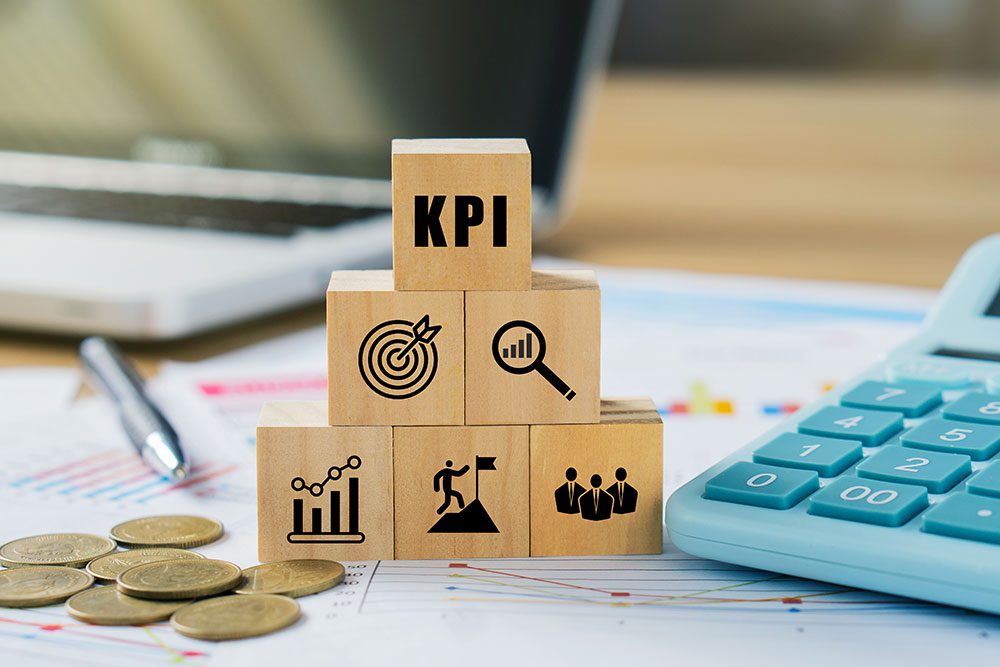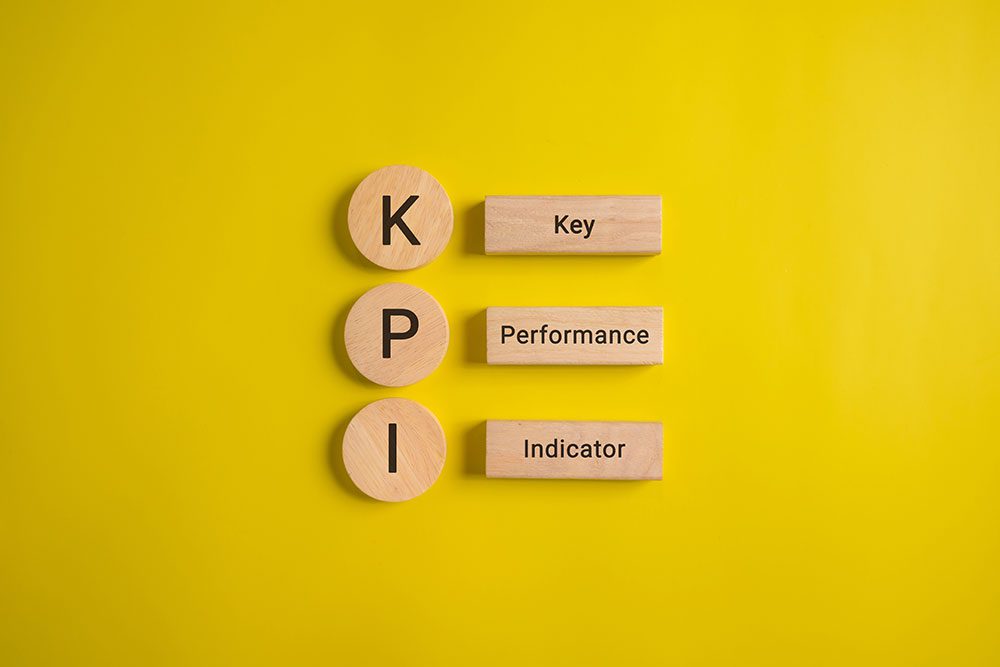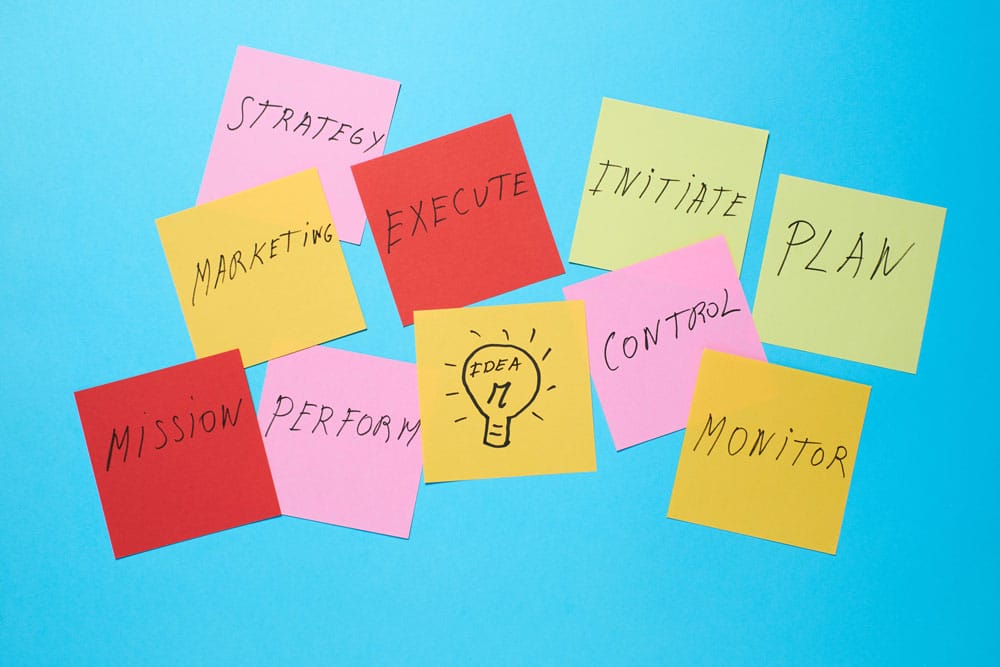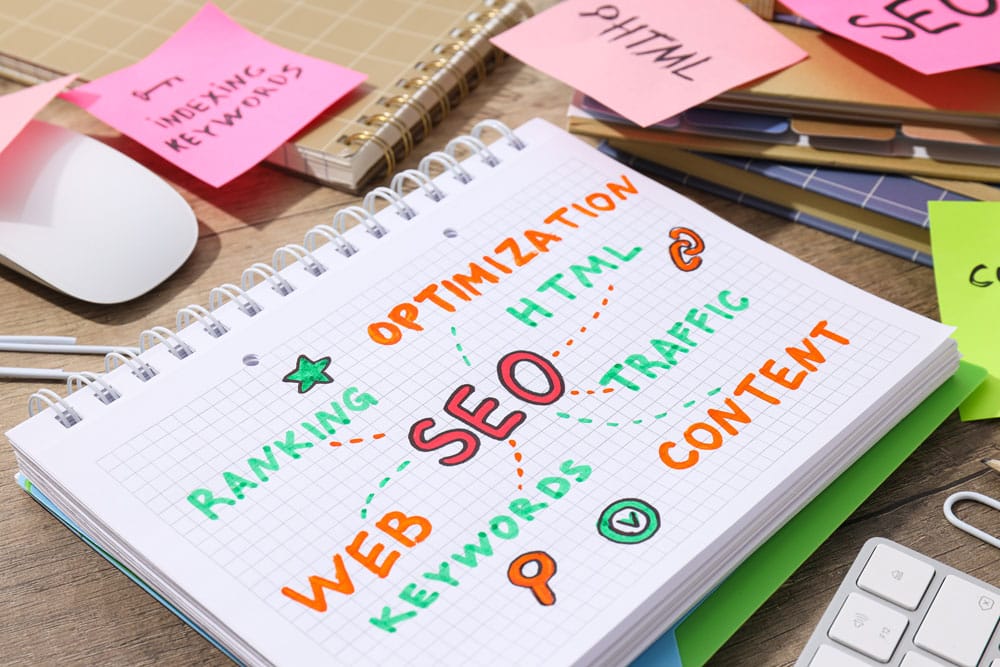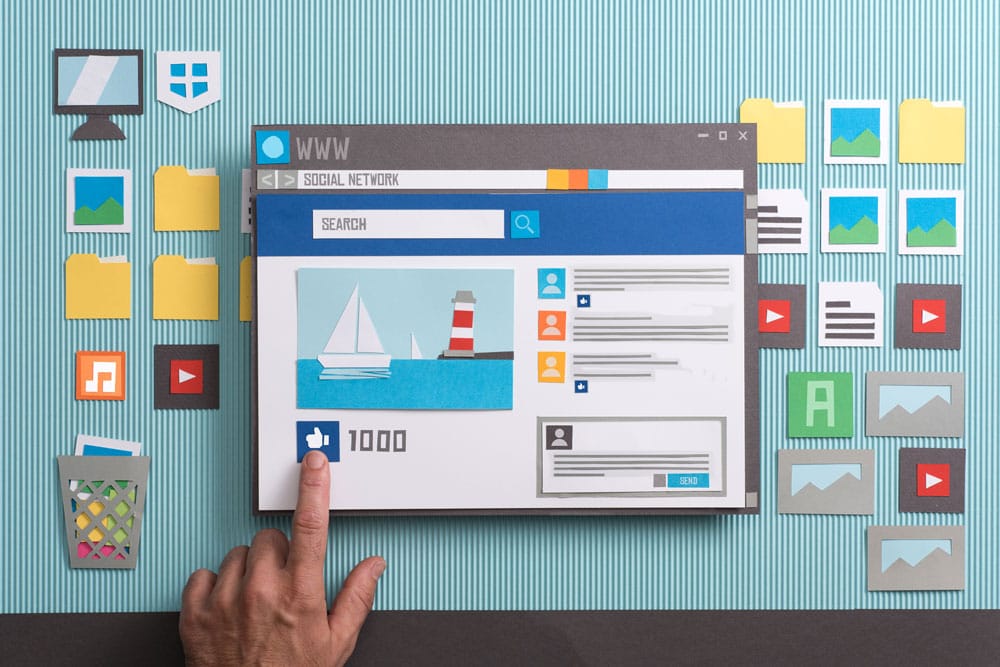5- Leveraging Partnerships for Business Growth
Strategic partnerships are not just about collaboration, they are powerful tools for business growth. A well-structured partnership can expand market reach, enhance brand credibility, and foster innovation. By leveraging partnerships effectively, businesses can achieve long-term success and competitive advantage. Strategic partnerships can be powerful tools for driving business growth when leveraged effectively. These collaborations enable companies to expand their reach, access new customer segments, and benefit from shared expertise and resources. A well-executed partnership can open doors to markets that would otherwise be difficult or costly to penetrate alone. For instance, by teaming up with a partner that has a strong presence in a particular region or industry, a business can quickly gain credibility and visibility without starting from scratch.
Let’s explore the key ways to leverage partnerships for business growth:
- Expanding Audience Reach – Gaining access to your partner’s customer base.
- Co-Marketing Opportunities – Running joint campaigns, events, and promotions.
- Boosting Brand Credibility – Strengthening your reputation through association.
- Driving Innovation – Creating new products or services through collaboration.
Expanding Audience Reach, Gaining Access to Your Partner’s Customer Base
One of the most immediate and tangible benefits of a strategic partnership is the opportunity to expand your audience reach by tapping into your partner’s established customer base. When two organizations collaborate, they each bring their unique followers, clients, or users to the table. This shared exposure creates a powerful multiplier effect—allowing both parties to access a wider pool of potential customers that would otherwise require significant marketing effort and cost to engage independently.
This form of audience expansion is especially beneficial when the partner’s audience aligns closely with your own target demographic. Through cross-promotions, joint announcements, or co-hosted events, your brand can be introduced to new prospects under the trusted endorsement of your partner. This kind of access can significantly shorten the sales cycle, build immediate credibility, and generate qualified leads more efficiently.Why It Matters: A strategic partnership allows businesses to tap into new markets and reach a wider audience without having to build everything from scratch. This is particularly beneficial for startups, small businesses, and companies looking to expand into new industries or regions.

Key Benefits of Expanding Audience Reach
Expanding your audience through strategic partnerships is one of the most effective ways to scale your brand and enter new markets without starting from scratch. By leveraging another company’s customer base, trust, and industry presence, you can significantly boost brand awareness, customer acquisition, and long-term growth.
- Faster Market Penetration: A partnership can eliminate barriers to entry into new industries or geographical locations. Entering a new geographic region or industry sector often requires significant resources, market research, and local adaptation. A local or established partner can help overcome these barriers by providing insider knowledge, access to distribution networks, or localized branding. Example: Starbucks expanded into Asia by partnering with local businesses and food service companies that understood the cultural and operational landscape. The right partner can fast-track success in unfamiliar or competitive markets, reducing trial-and-error.
- Access to New Customers: Partnering with an established brand allows instant exposure to a new customer base. It also helps to provide instant visibility to a new, often highly engaged audience. Rather than spending months or years building brand awareness in a particular segment, a strategic alliance enables brands to “borrow trust” and gain immediate credibility. Example; when Spotify partnered with Uber, it gained exposure to millions of Uber users globally, many of whom had never used the streaming platform before. New customer exposure can lead to increased sign-ups, trials, and purchases, accelerating brand growth.
- Lower Marketing Costs: Instead of spending heavily on acquiring new customers, a partnership provides a direct entry point. Traditional marketing campaigns to attract new customers can be expensive and time-consuming. With a partnership, brands can split the cost of campaigns or leverage each other’s organic reach, reducing financial burden. Example: Co-branded social media campaigns, email marketing, or bundled promotions cost less when shared between partners. This approach allows brands, especially startups or SMEs, to stretch their budgets further while still achieving impactful results.
Increased Brand Credibility and Trust: When a brand aligns itself with a well-respected partner, it instantly gains social proof and trust among the partner’s audience. This borrowed reputation can ease skepticism and encourage customers to try a new product or service. Example: A new software company partnering with Microsoft instantly appears more credible to enterprise clients. Trust plays a major role in consumer purchasing decisions, especially for new or unknown.

Examples of Audience Expansion Through Partnership
Strategic partnerships are not only about mutual product development or co-marketing, they also serve as powerful tools for reaching new audiences. When companies team up, they can tap into each other’s customer bases, expand market presence, and create unique, value-driven experiences for consumers. Below are real-world examples of brands that successfully expanded their audience reach through collaborative partnerships:
- Spotify & Uber – Uber partnered with Spotify to allow passengers to play their own music during rides. In 2014, Uber and Spotify formed a partnership that allowed Uber passengers to control the music playing during their ride using their personal Spotify accounts. This innovative feature merged transportation with music personalization to elevate the customer experience.
Benefits: For Spotify it gained access to Uber’s vast global customer base, Increased app usage and user engagement by positioning Spotify as more than just a streaming app, now a part of the user’s daily travel routine and created brand stickiness among users, especially among young, urban commuters.
For Uber it enhanced rider satisfaction by offering a more customized, interactive journey, differentiated itself from other ride-hailing services by integrating a unique lifestyle experience and boosted customer loyalty and retention through an emotionally engaging feature.
Result
This partnership was a perfect example of combining technology with lifestyle, helping both brands to deepen customer engagement and reach broader audiences in complementary sectors.
- Starbucks & Barnes & Noble: Starbucks set up coffee shops inside Barnes & Noble bookstores. tarbucks partnered with Barnes & Noble to open Starbucks cafés inside their bookstores. The aim was to create a cozy and enjoyable environment where customers could read and relax with coffee in hand, blending intellectual and social experiences.
Benefits: For Starbucks it entered a new market segment by engaging with a community of readers, students, and educators, strengthened its brand identity as a “third place” beyond home and work and gained long-term exposure through Barnes & Noble’s established retail footprint in prime locations. For Barnes & Noble it encouraged longer in-store visits, increasing the likelihood of book and gift purchases, made stores more attractive and experiential, especially in an era of declining brick-and-mortar book sales and reinforced its brand image as a destination for leisurely and thoughtful engagement.
Result:
The collaboration successfully created a dual-brand experience that drew in loyal customers from both sides, thereby increasing foot traffic, boosting sales, and strengthening brand affinity.
- Nike & Apple (Nike+iPod) – Apple integrated Nike’s fitness tracking into its iPods and iPhones. Nike and Apple teamed up in 2006 to launch the Nike+iPod Sport Kit, a device that allowed users to track their running stats via sensors in Nike shoes synced to an iPod. This collaboration eventually evolved into integrated fitness tracking apps and Apple Watch features.
Benefits: For Nike it penetrated the tech-savvy consumer segment, especially among early adopters and fitness enthusiasts, established itself as an innovator in the athletic wear space, going beyond physical products into digital experiences and encouraged product loyalty by tying physical gear (shoes) to digital tracking features.
For Apple it entered the fitness and sportswear market through a credible partner with global recognition and added functional value to its devices, especially the iPod and later the iPhone, positioning them as essential fitness tools and reinforced its commitment to lifestyle and wellness as core brand pillars.
Result:
This iconic partnership not only expanded both brands’ reach into new consumer groups but also laid the groundwork for future collaborations in the wearable tech and health-tech industries.

How to Successfully Expand Audience Reach Through Partnerships
Strategic partnerships are a powerful way to grow your audience without the need for large-scale, costly marketing efforts. By aligning with the right partner, you can tap into new markets, increase visibility, and attract more qualified leads. Here’s how to do it effectively:
- Identify the right partner – Choose a company with a complementary audience rather than a direct competitor. Look for businesses that share a similar target demographic but are not direct competitors. A complementary partner serves a related need for your ideal customer, making cross-promotion feel natural and valuable rather than forced or competitive. Example: A skincare brand can partner with a beauty subscription box company. Both appeal to the same audience (beauty-conscious consumers) but are not in direct competition. When evaluating potential partners, consider:Audience overlap and fit, brand reputation and values, marketing capabilities and resources and past success in collaborations
- Offer mutual value – Ensure both partners gain equal benefits from audience sharing. A successful partnership is built on balance and fairness. Ensure that both parties benefit from the shared exposure. This could be in the form of: Equal access to each other’s audience, joint lead generation, shared promotional content and referral incentives or bundled offers. Clearly outline expectations and benefits in advance. This builds trust and keeps both parties motivated throughout the campaign. Example: An email marketing platform and a graphic design tool could run a webinar together, each offering value (design + execution) while gathering leads through registration.
- Engage customers through joint initiatives – Promote the partnership through social media, events, and co-branded content. Don’t just form a partnership on paper, activate it! Create shared experiences that connect both brands with their respective audiences. This makes the partnership visible, memorable, and interactive. You can make use of popular tactics like: Co-branded content, blog posts, videos, case studies, infographics. Collaborative campaigns, launch social media challenges or giveaways. Virtual events, host webinars, product demos, or Q&A sessions together. Joint product offerings, create bundle deals or exclusive partnership products. Example: A food delivery service could team up with a fitness app to launch a “Healthy Living Month” campaign—complete with meal discounts and free workouts.
Leverage Multi-Channel Promotion: To maximize reach, promote the partnership across all available channels like: Social media cross-posting and shoutouts, email blasts to each brand’s mailing list, collaborative blog posts or press releases and Influencer endorsements from both networks Make sure the branding and messaging are aligned so the campaign feels seamless across platforms.

Co-Marketing Opportunities, Collaborating on Campaigns, Events, and Promotions
Strategic partnerships also open doors to impactful co-marketing initiatives. By pooling resources and creativity, businesses can launch joint campaigns that have broader reach, richer content, and stronger messaging than they might achieve alone. Co-marketing could involve anything from social media collaborations and content co-creation to co-branded events, webinars, or promotional discounts. Such initiatives not only help reduce marketing costs but also allow both brands to speak to each other’s audiences in a united and consistent voice. When done effectively, co-marketing strengthens engagement, drives traffic to each brand’s platforms, and results in greater ROI. It fosters a sense of community and collaboration, making campaigns more memorable and impactful for the audience.
Why It Matters: Marketing can be expensive and time-consuming. Partnering on marketing efforts allows companies to share costs, expand reach, and create more engaging campaigns.
Key Benefits of Co-Marketing Partnerships
Co-marketing partnerships allow two or more brands to combine resources, audiences, and creativity to run joint promotional campaigns. This strategy not only amplifies reach but also creates shared value through collaboration. Below are the core benefits in detail:
- Cost-Effective Advertising – Sharing marketing costs makes campaigns more affordable. By pooling budgets and resources, co-marketing helps reduce individual marketing expenses while still achieving a broad impact. Instead of each company paying for separate campaigns, the costs of design, ad placement, content production, and promotion are shared. This makes it especially beneficial for small and medium-sized businesses that want to scale their marketing without overstretching their budgets. Example: A software company and a digital agency may co-create a webinar, splitting costs for promotion and production while both gaining leads from the same event.
- Increased Brand Exposure – Companies benefit from each other’s audience and brand recognition. Each partner gets access to the other’s customer base, social media following, email list, and general brand awareness. This cross-pollination of audiences boosts visibility and introduces the brand to potential new customers who may have never heard of them before. It’s a great way to tap into markets that would otherwise require significant advertising investment to enter. Example: A fitness apparel company partnering with a health food brand could cross-promote each other through email campaigns and social media takeovers, attracting new health-conscious audiences on both sides.
- Shared Expertise and Creativity – Each brand brings its strengths to the table, whether it’s design, storytelling, video production, or technical know-how. This creative fusion results in more dynamic campaigns and often introduces each brand to new methods, trends, or tools they can adopt in future efforts. Example: A cosmetics brand partnering with a tech company to create an augmented reality (AR) try-on experience benefits from the tech partner’s innovation while elevating the cosmetic brand’s product presentation.
- Stronger Engagement – Collaborative content often creates more excitement and buzz among consumers. Collaborative marketing often brings fresh, engaging, and unique content that stands out from typical branded ads. When two brands come together, the storytelling possibilities expand, which tends to excite audiences and increase interaction rates. From social media giveaways to co-hosted events, the synergy often results in higher consumer interest and participation. Example: Influencer campaigns or joint contests where customers are encouraged to engage with both brands to win a prize can dramatically boost likes, shares, and user-generated content.

Examples of Successful Co-Marketing Partnerships
Co-marketing partnerships are collaborations between two or more brands that join forces to promote a shared product, service, or campaign. These partnerships combine the strengths and customer bases of the involved companies, amplifying their reach and effectiveness. Successful co-marketing initiatives often result in increased brand visibility, cost-effective marketing efforts, and enhanced customer engagement. By leveraging each other’s resources, expertise, and audience, these partnerships help both brands achieve mutual goals while offering value to their respective customers. Examples of successful co-marketing partnerships showcase the power of collaboration to boost marketing outcomes. Some examples are;
Red Bull & GoPro
McDonald’s & Disney
H&M & Designer Brands
- Red Bull & GoPro
The brands co-sponsored extreme sports events, leveraging their shared audience of adventure-seekers. Red Bull and GoPro formed one of the most iconic brand partnerships in the lifestyle and extreme sports space. This collaboration capitalized on the brands’ shared focus: adrenaline, adventure, and youth culture. By combining Red Bull’s reputation for organizing high-octane events with GoPro’s cutting-edge action cameras, they created immersive, visual storytelling experiences that captivated millions
Red Bull has long positioned itself as more than just an energy drink brand, it’s a media powerhouse known for hosting and sponsoring extreme sports events like Red Bull Air Race, Cliff Diving World Series, and Red Bull Rampage. Their events are designed for thrill-seekers and generate massive live and digital audiences.
GoPro provided the tools to capture these high-energy moments from unique, first-person perspectives. Athletes and adventurers used GoPro cameras to record stunning footage during the events, which was then used in co-branded marketing campaigns, social media posts, and YouTube videos. The partnership resulted in millions of YouTube views, viral social media content, and increased brand equity for both companies. A notable success was the 2012 Red Bull Stratos mission, where GoPro cameras captured Felix Baumgartner’s record-breaking skydive from the edge of space. Some of the key benefits of this Partnership was Audience Expansion, Emotional Engagement, and Brand Reinforcement
- McDonald’s & Disney
McDonald’s Happy Meals often feature Disney movie tie-ins. The long-standing partnership between McDonald’s and Disney is a textbook example of co-branding that appeals to a shared target demographic: children and families. The collaboration began in the late 1990s and has continued through various campaigns, particularly through McDonald’s Happy Meals, which often feature toys and branding from popular Disney films.
Disney provided access to its beloved characters and franchises such as Frozen, Toy Story, Moana, and Star Wars. These movie tie-ins created excitement around upcoming releases and helped Disney reach younger audiences in everyday family settings.
By including Disney-themed toys in Happy Meals, McDonald’s created an incentive for families to dine in or drive through. Children were not just getting a meal; they were receiving a piece of the Disney magic. McDonald’s also promoted Disney’s latest films through in-store displays, commercials, and packaging. Some key benefits of this Partnership are, boost in sales & foot traffic, and cross-promotional success and family brand synergy
This partnership led to spikes in Happy Meal sales during film promotions and helped solidify McDonald’s positioning as a go-to spot for family dining. For Disney, it created a powerful, non-traditional marketing channel to engage with fans outside the theater.
- H&M & Designer Brands
H&M has collaborated with high-end designers like Karl Lagerfeld and Versace for exclusive collections. H&M’s strategic collaborations with iconic high-end designers like Karl Lagerfeld, Versace, Balmain, Stella McCartney, and more recently Giambattista Valli and Mugler, have revolutionized the way luxury fashion is accessed by everyday consumers. These limited-edition capsule collections merge high fashion with affordability, generating buzz, long queues, and massive online traffic. Renowned designers bring their signature styles, creativity, and brand prestige to H&M’s product line. These partnerships allow luxury fashion houses to reach a wider, global audience they typically wouldn’t cater to due to price points. For example: Karl Lagerfeld’s collection (2004) was the first of its kind and sold out within hours and Versace (2011) infused bold prints and glamour into fast fashion, attracting high-profile attention.

As a fast fashion powerhouse, H&M has the infrastructure to mass-produce and distribute designer collections globally. Their ability to create anticipation through strategic marketing, pop-up stores, and influencer promotions has helped turn each launch into a cultural event.
H&M controls pricing and accessibility while maintaining the essence of the luxury brand involved. Some key benefits of the partnership include, market expansion , brand rejuvenation , Brand Elevation and sale & traffic.These collaborations often sell out within minutes and become collectors’ items. They drive millions in revenue, create social media waves, and deepen customer loyalty. H&M’s model has also inspired other fast fashion brands like Target and Uniqlo to adopt similar strategies with well-known designers.
How to Run a Successful Co-Marketing Campaign
Co-marketing campaigns allow two or more brands to combine their resources, creativity, and audiences to create high-impact marketing initiatives. When executed well, co-marketing helps both partners expand their reach, boost brand awareness, and drive customer engagement, all while sharing the workload and costs. Whether you’re a startup collaborating with a bigger brand or two companies with equal footing teaming up, co-marketing can deliver powerful results when planned strategically. Here’s how to do it right:
- Develop joint content – Create co-branded blog posts, social media content, or videos. One of the most effective ways to start a co-marketing campaign is by collaborating on content. Jointly developed blog articles, videos, infographics, and social media posts can speak to both audiences while reinforcing each brand’s voice. Ensure both partners’ logos and key messages are clearly represented throughout the content. Choose themes that appeal to your shared audience and highlight how your partnership adds value.
Why it works: Joint content doubles your content reach and boosts SEO by allowing backlinks between both companies’ websites. It also helps foster brand trust when audiences see collaboration between two reliable brands.
- Host events together – Webinars, live streams, or in-person activations can generate excitement. Events are powerful tools to engage your audience in real time. Co-hosted events, such as webinars, workshops, Instagram Lives, or even physical trade shows, can increase brand exposure, provide value to attendees, and position your partnership as a thought leader collaboration. Both partners can promote the event to their respective audiences, resulting in increased registration and engagement.
Why it works: Events offer real-time interaction, lead generation, and strong brand presence. By sharing the planning, logistics, and promotion, both companies can reduce costs and effort while doubling exposure.
- Run shared promotions – Offer bundled products, discounts, or referral programs. One of the quickest ways to create buzz is to collaborate on a shared promotion. This could mean offering a discount when customers buy from both brands, bundling complementary products or services, or launching a joint referral program. These kinds of promotions not only drive sales but also introduce each partner’s offerings to new audiences.
Why it works: Shared promotions encourage immediate customer action. They’re also a win-win for both brands, as customers feel they’re getting added value from the partnership.

Boosting Brand Credibility: Enhancing Your Reputation Through Association
Reputation is a crucial currency in the world of business, and strategic partnerships offer a powerful way to enhance it. When a lesser-known company partners with a trusted or more established brand, it benefits from the positive perception and authority of that partner. The association acts as an endorsement, sending a strong signal to customers, investors, and stakeholders that the brand is credible and worthy of trust.
This increase in perceived reliability can be particularly valuable in competitive industries where differentiation is challenging. When customers see that a business is aligned with reputable partners, they are more likely to view its products, services, or expertise as legitimate. Over time, this brand association can lead to increased market trust, customer loyalty, and improved positioning in the marketplace.Partnering with a trusted, established brand can boost credibility and enhance consumer trust. Smaller or newer businesses can gain recognition by associating with well-known companies.
Key Benefits of Credibility-Boosting Partnerships
Strategic partnerships that enhance your brand’s credibility can have a profound impact on the growth, trustworthiness, and long-term success of your business. When you team up with a reputable partner, you gain not only their industry expertise and reputation but also access to a wider audience. Below are some of the most important benefits that come from credibility-boosting partnerships:
- Builds Customer Trust – One of the most immediate benefits of forming a credibility-boosting partnership is the increased trust it brings from your customers. Consumers tend to trust brands that have a strong reputation or are associated with industry leaders. When a smaller or less-known company teams up with an established brand, customers are more likely to view the collaboration as credible, as the larger partner lends their reputation to the venture.
Why it works: Trust is one of the key drivers in consumer purchasing decisions. According to studies, over 80% of consumers are more likely to trust a brand if it is associated with a company they already know and trust. By aligning with a reputable partner, your brand can instantly tap into that established trust, making it easier to gain new customers and maintain loyalty from existing ones.
- Enhances Market Positioning – A partnership with an industry leader elevates a brand’s status. Collaborating with a well-respected partner can elevate your own brand’s market positioning. Partnering with a leader in your industry allows your brand to align itself with the high standards and values of that industry leader, thereby enhancing your market reputation. When a brand is associated with excellence, it can often lead to an increase in perceived quality and status.
Why it works: Positioning your brand in a more prestigious light allows you to attract a higher-value audience and opens the door for premium pricing strategies.
- Opens Doors to New Opportunities – Being associated with a strong brand can attract new investors, customers, and media attention. Forming credibility-boosting partnerships opens up a wealth of opportunities for your business. Whether it’s attracting new investors, expanding your customer base, or gaining media attention, partnering with a well-established brand helps you reach new heights. The association with a recognizable partner can lead to increased exposure in new markets, greater attention from stakeholders, and access to new business opportunities that might not have been possible otherwise.
Why it works: Being associated with an industry leader or highly respected brand often makes your business more attractive to investors who are looking for reliable and proven companies. Additionally, media outlets and journalists tend to cover partnerships between reputable companies, which increases your exposure.

Examples of Brand Credibility
Below are the real-time example of brand credibility
- Apple & Mastercard – Apple Pay’s partnership with Mastercard boosted trust in the security of mobile payments.
- Tesla & Panasonic – Tesla’s partnership with Panasonic for battery production solidified its reputation in sustainable energy.
- American Express & Luxury Brands – American Express partners with high-end hotels and airlines to maintain its premium brand image.
How to Leverage Partnerships to Build Credibility:
Building credibility through partnerships is one of the most powerful ways to enhance your brand’s reputation. Strategic partnerships with established and trusted brands can position your business as a credible and reliable entity in your industry. Partnerships offer social proof, create new opportunities for audience engagement, and can significantly boost your reputation when executed correctly. Below are the key strategies to leverage partnerships for building credibility:
- Partner with established brands – When seeking to build credibility through partnerships, aligning with well-established and respected brands in your industry is crucial. Partnering with a brand that is recognized for its quality, trustworthiness, and values can significantly enhance your own company’s reputation by association. Consumers often look to the brands they already trust to guide their purchasing decisions. Therefore, collaborating with a credible brand enables you to gain immediate trust from their audience.
- Highlight the partnership publicly – Once you’ve secured a strategic partnership, it’s important to make it known to your target audience. Promoting the partnership publicly through press releases, social media, blog posts, and advertising campaigns can help reinforce the credibility boost you receive. Broadcasting your collaboration not only builds awareness but also communicates to the public that your brand is reputable enough to collaborate with trusted names in your industry.
- Ensure a mutual reputation boost – For a partnership to effectively build credibility, it’s essential that the collaboration benefits both parties equally. The best partnerships are those where both brands complement each other and where each partner brings value to the table. This mutual benefit ensures that both brands enhance their credibility and market position, rather than one brand taking all the credit.
Why it works: Partnerships that result in a “win-win” situation ensure that both brands grow together. If only one party benefits, the credibility boost is often seen as inauthentic, and customers may become skeptical. When both parties gain from the partnership, it reinforces the idea of trustworthiness and collaboration. Moreover, it can generate positive press and media coverage that highlights the strengths and shared values of both companies, making the collaboration more credible in the eyes of the public. .

Driving Innovation, Combining Expertise to Create New Products, Services, or Solutions
Innovation is often born at the intersection of collaboration. Strategic partnerships unite different sets of skills, knowledge, technologies, and perspectives, which can lead to the development of new products, services, or business models. By working together, partners can identify market gaps, generate creative solutions, and accelerate development timelines.
This synergy is especially valuable in industries where rapid innovation is a key to staying competitive. Through shared research, product testing, and user feedback, partners can innovate more efficiently while spreading the risks and costs associated with bringing new ideas to market. Ultimately, such collaborations allow businesses to move faster, solve problems more effectively, and deliver greater value to their customers.Why It Matters: Some of the most groundbreaking innovations come from cross-industry or interdisciplinary partnerships. By combining strengths, businesses can create new products, services, or technologies that would be difficult to develop alone.
Key Benefits of Innovation-Driven Partnerships:
Innovation-driven partnerships bring several critical advantages to businesses looking to stay ahead in a competitive market. These partnerships combine complementary strengths, enable faster development cycles, and provide access to cutting-edge technologies. Companies engaged in these types of collaborations often find themselves at the forefront of industry trends, enjoying unique opportunities for growth and differentiation. Below are the key benefits these partnerships offer:
- Faster Product Development – One of the primary benefits of innovation-driven partnerships is the acceleration of product development. By sharing expertise, resources, and knowledge, companies can move through the R&D process more quickly.
- Access to New Technologies – Partnering with another organization often provides access to new technologies and innovations that each company may not have the resources to develop independently.
- Competitive Advantage – Innovation-driven partnerships help businesses maintain a competitive advantage by enabling them to stay ahead of market trends and customer expectations.

Examples of Innovation-Driven Partnerships
Several successful partnerships have demonstrated the power of innovation in transforming industries and creating new value propositions. Below are examples of innovation-driven collaborations that have led to groundbreaking products and services:
- BMW & Intel (Self-Driving Cars) – BMW partnered with Intel to develop autonomous vehicle technology. BMW’s partnership with Intel focuses on developing autonomous vehicle technology, combining Intel’s advanced computing capabilities with BMW’s automotive expertise. By collaborating on the development of self-driving car technology, the two companies aim to accelerate the arrival of autonomous vehicles to market. Intel’s expertise in AI, data processing, and sensors complements BMW’s design and engineering knowledge, allowing them to create safer, more efficient vehicles. This partnership highlights how automotive companies can integrate cutting-edge technology into traditional industries to create innovative, future-ready products
- Nike & Apple (Nike+ App) – Nike’s fitness expertise combined with Apple’s technology resulted in a revolutionary fitness tracking system. Nike and Apple formed a strategic partnership to revolutionize the fitness tracking industry with the Nike+ app. By combining Nike’s deep understanding of fitness and athletic performance with Apple’s prowess in wearable technology and app development, the two companies created a fitness ecosystem that tracks users’ workouts, health metrics, and progress in real time. The Nike+ app integrates seamlessly with Apple devices like the iPhone, iPod, and Apple Watch, offering a personalized experience that resonates with health-conscious consumers. This partnership brought both companies closer to their respective customers by providing a product that combines fitness and technology in a way that had never been done before.
- Starbucks & PepsiCo (Bottled Frappuccino) – Starbucks leveraged PepsiCo’s distribution network to create ready-to-drink coffee beverages. Starbucks formed a partnership with PepsiCo to create a ready-to-drink bottled Frappuccino. This collaboration enabled Starbucks to leverage PepsiCo’s vast distribution network to bring its popular beverage to a broader audience. PepsiCo’s experience in bottling and distributing beverages, combined with Starbucks’ brand strength in the coffee industry, resulted in the creation of a successful product line that reached convenience stores and supermarkets across the globe. The partnership also allowed Starbucks to enter the ready-to-drink coffee market, expanding its product offerings beyond its cafes and into consumers’ everyday lives.

How to Drive Innovation Through Partnerships
Driving innovation through strategic partnerships is a powerful way to unlock new solutions, create unique products, and bring cutting-edge technologies to market faster. In today’s rapidly evolving business landscape, collaboration with the right partners can provide the resources, expertise, and insights needed to outpace competitors and meet changing consumer demands. By leveraging complementary strengths and fostering an environment of experimentation and risk-taking, businesses can accelerate their innovation efforts. Below are some key strategies for driving innovation through partnerships:
- Look for partners with complementary expertise – Innovation often arises when diverse skill sets come together to solve complex problems. When selecting a partner, look for organizations that offer complementary expertise rather than duplicating your own capabilities. For instance, combining technical skills with business acumen can result in highly innovative products that are not only functional but also meet market needs. A tech startup with advanced knowledge in AI can partner with an established brand to apply these innovations in real-world applications, resulting in a product that combines cutting-edge technology with robust marketing and distribution strategies. By merging strengths, businesses can push the envelope on what’s possible.
- Encourage R&D collaboration – Research and development (R&D) collaboration is at the heart of innovation. By pooling resources for joint research, companies can create an environment where new ideas are explored and tested rapidly. R&D partnerships allow businesses to access new technologies, scientific advancements, and specialized knowledge without having to develop everything in-house. For instance, two companies in the pharmaceutical industry may collaborate on drug research, sharing costs and expertise to create more effective treatments. Encouraging brainstorming sessions, product testing, and prototyping as a team will ensure a continuous flow of fresh ideas and perspectives, often leading to breakthroughs that wouldn’t be possible in isolation.
- Stay flexible and adaptable – The ability to experiment with new ideas and pivot quickly is crucial for driving innovation. When entering a partnership, it’s important to create a flexible framework that allows room for change. Be prepared to adapt to new trends, market conditions, or technologies that emerge during the partnership. Innovation often requires taking calculated risks, which means not every idea will succeed on the first try. Encourage a culture of trial and error, where experimentation is seen as a necessary path to success. Stay open to adjusting your approach or rethinking strategies as needed, ensuring the partnership remains dynamic and responsive to new opportunities.
Continue Reading
- Understanding Strategic Partnerships – Part 1
- Understanding Strategic Partnerships – Part 2
- Understanding Strategic Partnerships – Part 3
- Understanding Strategic Partnerships – Part 4
- Understanding Strategic Partnerships – Part 5
Written By: Adetoyinbo Modupee















